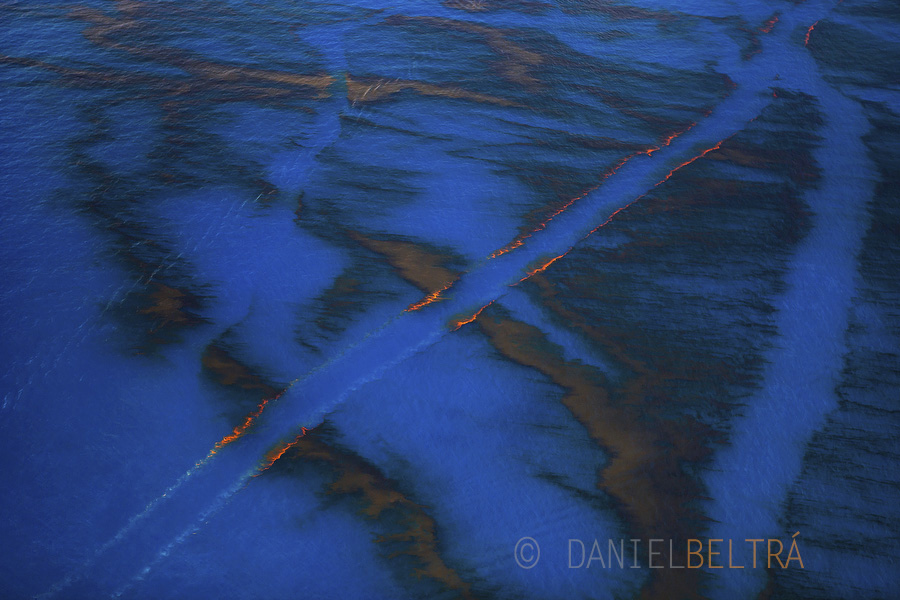
Photo by Daniel Beltrá for Greenpeace
I was fortunate to have the chance to attend a reception for photographer Daniel Beltrá at the G2 Gallery. (I wrote another post about his work not that long ago.) He was super nice and answered many questions about his amazing aerial photos of the BP Gulf oil spill. One burning question I had (pun intended) was, “Is that bright orange along the edge of the blue path fire?” (Look in the middle of the photo on the left.)
According to Beltrá, that ethereal looking blaze is not fire; it’s actually caused by oil and chemical dispersants uniting. As the chemical dispersants Corexit 9527A and 9500A merged with oil to help the black mass degrade faster, completely unnatural and eerie colors formed on and under the ocean’s surface. The colors were usually bright orange or a strange glowing yellow-green.
Beltrá has taken aerial photographs all over the world and he said he’s never seen anything like it. A couple years ago at another gallery exhibit of Spill hosted near the Gulf, he had a chance to talk to a researcher examining the effects of the oil spill on blue crab larvae. She was finding the same exact orange fire-like color in larvae. Since then, blue crab larvae containing oil have been in the news and also studies have found that the combination of oil and Corexit is 52 times more toxic than just oil.
Later I thought…putting anything into the ocean that turns water and oil into an alien orange or yellow-green probably isn’t a good idea. Also, putting anything into the ocean named Corexit just doesn’t sound great. Sometimes a study tells you what you already knew; using chemical dispersants was a very bad idea.
(Don’t forget to go see Spill at the G2 Gallery, it will be on display through April 21st.)
Is the orange gel like substance that is now in the digestive track of Gulf Shrimp COREXIT?
Hi Christy, I hope not! According to the National Health Institute of Environmental Health Sciences, the dispersant should have broken down a long time ago. If I discover more information or references about gulf shrimp, I’ll update this comment.